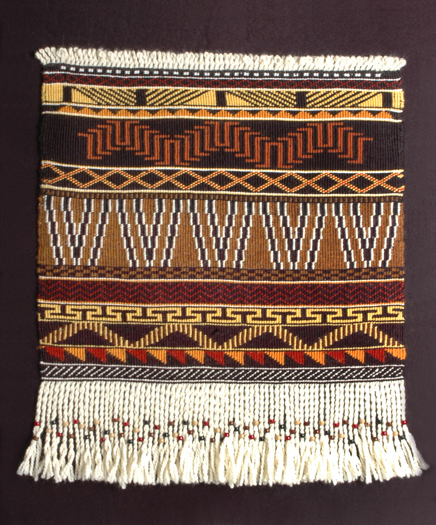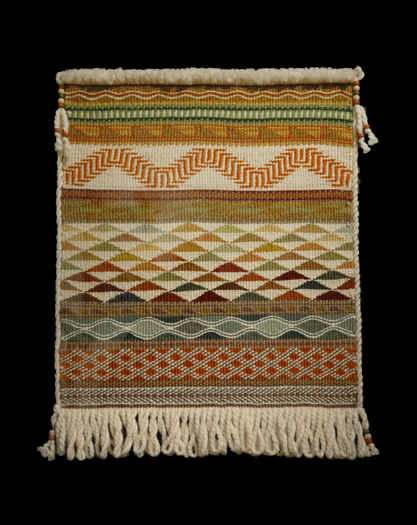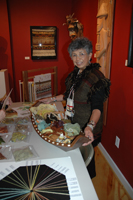-
 There Were No Roads Back Then – Native Highway 101Wool and Acrylic Blend Weaving by Betty Pasco, Adzed Cedar Frame by Duane Pasco
There Were No Roads Back Then – Native Highway 101Wool and Acrylic Blend Weaving by Betty Pasco, Adzed Cedar Frame by Duane Pasco- 30.13"h
- 30"w
- 1"d
SOLD -
 Basket Design SamplerFramed Wool Weaving (dimensions are of frame)
Basket Design SamplerFramed Wool Weaving (dimensions are of frame)- 30.75"h
- 24.75"w
- 2.75"d
SOLD -
 Twined Salish Weaving SamplerWool, Commercial Dyes (colors chosen to match what natural dyes would look like), Framed
Twined Salish Weaving SamplerWool, Commercial Dyes (colors chosen to match what natural dyes would look like), Framed- 28.75"h
- 24.75"w
- 3.25"d
SOLD

Betty Pasco is a Suquamish tribal elder, born and raised on Phinney Bay near Bremerton, Washington.
She spent her childhood years in the home of her grandparents, her grandmother a renowned basket weaver. Betty married at an early age and was absent from the Northwest for thirty plus years, returning to the Puget Sound area in 1996.
Once back in her homeland she launched herself into a program of education learning the traditional art of her people. She began with basket weaving and, for the most part, was able to teach herself by studying and getting inspiration from her collection of her grandmother’s baskets. Her interest in Salish weaving began after she took a natural dye and wool weaving class taught by Susan Pavel. Lately Betty has made great strides in helping to bring back the art of traditional Salish wool weaving using photographs of the few ancient robes in museum collections, which were woven from dog’s wool and called “skabai” in the Lushootseed language.
Betty has experimented, with good results, native dye materials obtained from local plants and lichens. While she rarely uses natural dyes in her commissioned work, she chooses commercially dyed wool that best replicates the same beautiful and varied tones of natural dyes.
Betty is an active member of her tribe and enjoys serving in the role of mentor to young girls with whom she shares her knowledge. She has demonstrated and shown her work at the Skagit County Museum in La Conner and the Stonington Gallery in Seattle, where her work is regularly on display. Betty’s work has been collected privately and can be seen publicly on display at the Clearwater Casino Hotel at Suquamish, WA, as well as the Seattle Art Museum.
